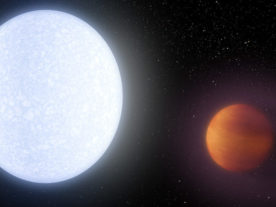
Iron and Titanium Found in Atmosphere of Ultra-hot Exoplanet
The chemical makeup of Earth’s atmosphere is said to contain about 78% Nitrogen and 21% oxygen, with argon, carbon dioxide, and other gases making up the remaining 1%. But an international team of scientists says they have detected vapors of iron and titanium in the atmosphere of what is considered to be the hottest “ultra-hot” […]
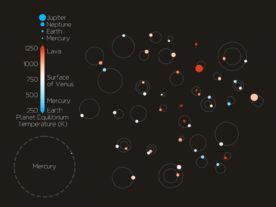
Astronomers Find and Confirm 44 New Extrasolar Planets
An international team of astronomers has confirmed the existence of 44 new extrasolar planets. The planets were first spotted by the astronomers through data gathered from Campaign #10 of NASA’s Kepler K2 mission. According to NASA’s Kepler and K2 webpage, campaign #10 ran from July 6, 2016, to September 20, 2016. To verify their findings, […]

Astronomers Snap First Baby Picture of Newborn Exoplanet
An international group of astronomers has captured what is being called the first confirmed image of a planet forming near a young dwarf star. The group, led by scientists at the Max Planck Institute for Astronomy in Heidelberg, Germany, found the newborn planet making its way through a protoplanetary disk of dust and gas that […]
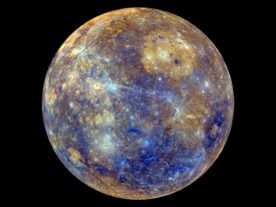
Newly Discovered Exoplanet Resembles Planet Mercury
A newly found exoplanet called K2-229b is about 20% larger and 2.5 times more massive than Earth. But the international team of astronomers, who recently discovered it, say it’s more like a super-charged version of our solar-system’s innermost planet, Mercury. They describe the planet as hot, metallic, made of iron and nickel, circles an orange K-dwarf […]

Nearby Star Produces Powerful Solar Flare Blast
Those looking for the possible habitability of Proxima Centauri b, the closest exoplanet to Earth, may have their hopes dashed by new findings of the exoplanet’s parent star. When Proxima Centauri b, a mere 4.24 light years from Earth, was discovered in 2016, scientists found the planet was located within the habitable zone of its […]

95 New Exoplanets Found With Data From NASA’s K2 Mission
Thanks to data from NASA’s K2 mission, an international team of scientists, led by Andrew Mayo of the National Space Institute at the Technical University of Denmark have recently discovered 95 more exoplanets. From a list of some 275 candidates, the researchers validated 149 of them as actual exoplanets. According to the research team, it […]

New Insight Into TRAPPIST 1 Planets
Two new, but separate, studies provide fresh insight into planets orbiting the nearby red dwarf star TRAPPIST-1. One of the studies, published in the journal Nature Astronomy, suggests the atmospheres of at least three of the seven TRAPPIST-1 exoplanets found so far do not seem to be as hydrogen-rich as our solar system’s gas giant […]
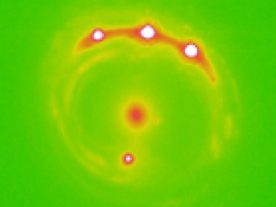
First Extragalactic Planets Found
No doubt you’ve heard about extrasolar or exoplanets; planets that were discovered orbiting a star outside of our own solar system. Nearly 3,000 of these planets have been confirmed so far, with many more candidate planets waiting to be verified. However, these planets have all been discovered within our own Milky Way galaxy. An astrophysics […]

Kepler Discovers More Exoplanets / Scientists Classify Types of Planets
NASA’s planet-hunting Kepler mission recently released what it calls the most comprehensive and detailed catalog of candidate exoplanets. Exoplanets or extrasolar planets are planetary bodies that exist outside of our solar system. The new and final Kepler catalog from data gathered from the spacecraft’s initial patch of sky view within the Cygnus constellation includes 219 […]
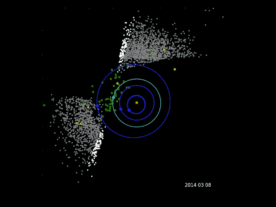
Einstein Proven Correct; Gravitational Waves Detected; Super Hot Planet
Einstein Theory Confirmed Again In his 1915 Theory of General Relativity, physicist Albert Einstein proposed that mass can bend space time. And he predicted that when a distant star’s light passed by a large object en route to the observer, the object’s gravity can bend and brighten the starlight like a magnifying lens. This effect, called […]
